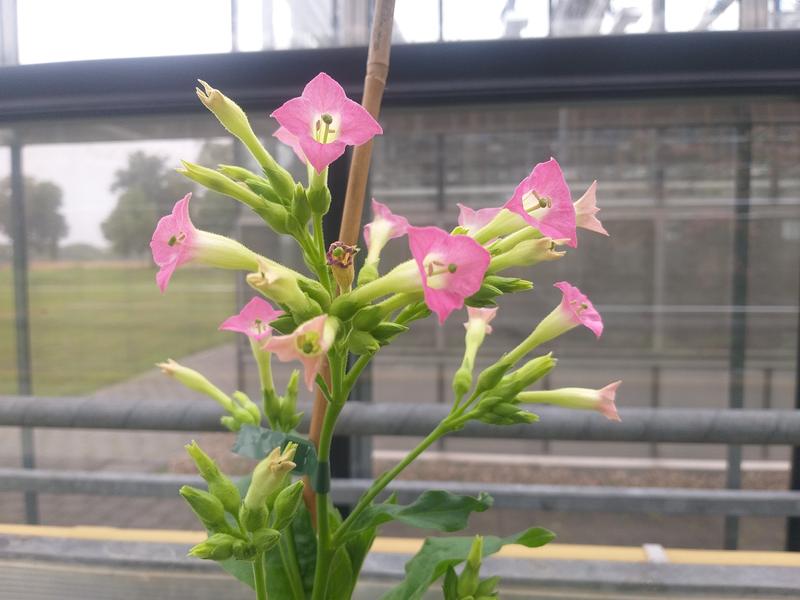Why Plants Patch Broken DNA So Fast
Researchers uncover how rapid DNA repair protects genomes from internal threats, with implications for cancer biology
Scientists have uncovered a critical role for rapid DNA repair in maintaining genome stability. A new study reveals that repair of double-strand breaks (DSBs) in nuclear DNA serves as a powerful safeguard against the integration of foreign DNA from chloroplasts — a phenomenon that, while important for evolution, can be highly destabilizing to the genome. The research expands our knowledge about plant genome evolution and also has relevance to the medical field.
The findings, presented by Dr. Enrique Gonzalez-Duran and Prof. Dr. Ralph Bock from the Max Planck Institute of Molecular Plant Physiology in Nature Plants, shed new light on endosymbiotic gene transfer (EGT) — an ongoing evolutionary process in which genes from organelles such as chloroplasts and mitochondria are relocated into the nuclear genome. While successful gene transfers help the nucleus to better coordinate its function with that of the organelles, they also pose risks: mutations arising by DNA insertion can disrupt essential nuclear genes and provoke harmful rearrangements.
The team of researchers discovered that the DSB repair machinery has a key role in controlling the frequency of gene transfer. To investigate how plants control EGT, the team focused on the DSB repair pathways — known entry points for organellar DNA. Using genetically engineered tobacco plants and a previously developed screening system for EGT events, the researchers selectively inactivated two different DSB repair pathways and monitored over 650,000 seedlings for new EGT events.
The results were striking: disabling either of the two repair pathways led to a dramatic increase in gene transfers from chloroplasts to the nucleus — in some cases up to 20-fold.
The researchers propose a new model to explain their results: Under normal conditions, plants rapidly repair DSBs in their nuclear DNA, effectively sealing these vulnerable sites before organellar DNA can enter. In this way, the DNA repair machinery serves as a molecular “gatekeeper”. However, when one repair pathway is defective, the other pathways can compensate to some extent, but repair proceeds more slowly. This delay leaves DSBs exposed for longer, thus creating more opportunities for chloroplast DNA to integrate. The result is a surge in EGT events, often accompanied by genome rearrangements and increased instability. “The magnitude of the effect suggests that rapid DNA repair is essential for plants to maintain long-term genome stability,” explains Dr. Enrique Gonzalez-Duran, first author of the study.
Implications Beyond Plants
Although the work was carried out in tobacco plants, the team believes the mechanism uncovered is likely universal across eukaryotes. "These DNA repair pathways are conserved in animals and fungi," says Prof. Dr. Ralph Bock, director of the institute and co-author. “Our findings could explain similar genome instability mechanisms in other organisms, including humans. Further research is needed to clarify this.”
The research opens new avenues for understanding how organellar DNA contributes to mutations in the nuclear genome. It may even have relevance for human health, and in particular to cancer biology, where mitochondrial DNA insertions and genome instability are known molecular triggers of tumor initiation.
“Our discovery provides fundamental insights into genome protection and the risks of gene transfer,” adds Gonzalez-Duran. “It reveals how crucial fast DNA repair is — not just to fix damage, but also to defend the integrity of the genome itself.”
Wissenschaftlicher Ansprechpartner:
Dr. Enrique Gonzalez-Duran
Max Planck Institute of Molecular Plant Physiology
Mail: Duran@mpimp-golm.mpg.de
Tel.: +49 331 567-8389
Originalpublikation:
Enrique Gonzalez-Duran, Xenia Kroop, Anne Schadach, Ralph Bock
Suppression of plastid-to-nucleus gene transfer by DNA double-strand break repair
Nat. Plants (2025)
https://doi.org/10.1038/s41477-025-02005-w
Weitere Informationen:
https://www.mpimp-golm.mpg.de/2795373/news_publication_24784106_transferred
Die semantisch ähnlichsten Pressemitteilungen im idw


